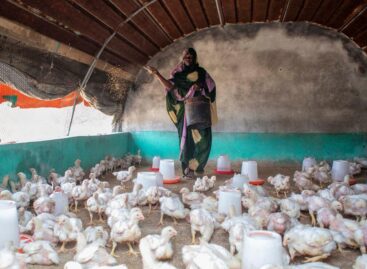Global food prices rise in August
Global food prices rose for the third consecutive month in August, influenced by generally firmer demand and a weaker U.S. dollar, according to a report released today by the Food and Agriculture Organization of the United Nations.
The FAO Food Price Index, which tracks the international prices of the most commonly traded food commodities, averaged 96.1 points in August, up 2.0 percent from the previous month and reaching its highest level since February 2020.
The FAO Cereal Price Index rose by 1.9 percent from July, averaging 7.0 percent above its value in August 2019, with coarse grains leading the rise. Sorghum prices rose 8.6 percent – and stood at 33.4 percent above their year-ago level, mostly on the back of strong import demand by China. Maize prices rose 2.2 percent amid concerns that recent crop damages in Iowa would impact supply. International rice prices also rose, underpinned by seasonally tight availabilities and increasing African demand.
The FAO Sugar Price Index rose by 6.7 percent from the previous month, reflecting reduced production prospects due to unfavorable weather conditions in the European Union and Thailand, the world’s second-largest sugar exporter, as well as strong import demand by China.
The FAO Vegetable Oil Price Index increased by 5.9 percent, led by firmer values for palm oil especially, but also soy, sunflower and rapeseed oils. The moves mainly reflect prospective production slowdowns in leading palm oil producing countries amid firm global import demand.
The FAO Dairy Price Index was virtually unchanged from July, with cheese and whole milk powder quotations declining amid expectations of ample seasonal export availabilities in Oceania, while butter prices rose due to tightening export availabilities in Europe in the wake of the August heat wave reducing milk output.
The FAO Meat Price Index was also almost unchanged since July – although down 8.9 percent from August 2019 – as the effect of lower import demand for bovine, poultry and ovine meats was offset by surging import demand for pigmeat from China.
Updated cereals outlook
FAO also lowered its forecast for world cereal production in 2020 by 25 million tonnes from a July projection, due largely to expectations of a lower maize output in the United States of America. However, despite this reduction, such an outcome would still represent an all-time high, amounting to 58 million tonnes above the 2019 output.
Record maize harvests are forecast for Argentina and Brazil, while global sorghum production is expected to grow by 6 percent from the previous year. Worldwide rice production in 2020 is also expected to reach a new record of 509 million tonnes.
More detailed assessments are available in the Cereal Supply and Demand Brief, also released today.
FAO’s new forecast for world cereal utilization in 2020/21 stands at 2 764 million tonnes, up 2.0 percent on an annualized basis
Global cereal stocks are projected to rise by 1.7 percent to 895.5 million tonnes by close of the 2021 seasons, translating to a world cereal stocks-to-use ratio of 31.8 percent, slightly down from July but still relatively high from a historical perspective.
Buoyed by expected larger shipments of rice and coarse grains, world trade in cereals in 2020/21 is now pegged at 441.4 million tonnes, 1.6 percent above the 2019/20 level.
Related news
FAO: International food prices have been declining since September
🎧 Hallgasd a cikket: Lejátszás Szünet Folytatás Leállítás Nyelv: Auto…
Read more >FAO-Ministry of Agriculture Scholarship Program Continues
🎧 Hallgasd a cikket: Lejátszás Szünet Folytatás Leállítás Nyelv: Auto…
Read more >FAO: 2026 is the International Year of Rangelands and Pastoralists
🎧 Hallgasd a cikket: Lejátszás Szünet Folytatás Leállítás Nyelv: Auto…
Read more >Related news
New Year’s Eve: shortened opening hours in stores – general store closure on January 1
🎧 Hallgasd a cikket: Lejátszás Szünet Folytatás Leállítás Nyelv: Auto…
Read more >Tejföl is only a name for live flora: new categories for sour dairy products will be introduced from 2026
🎧 Hallgasd a cikket: Lejátszás Szünet Folytatás Leállítás Nyelv: Auto…
Read more >Sausage prices before New Year’s Eve: cheap entry, expensive premium – how big is the gap on the shelves?
🎧 Hallgasd a cikket: Lejátszás Szünet Folytatás Leállítás Nyelv: Auto…
Read more >






